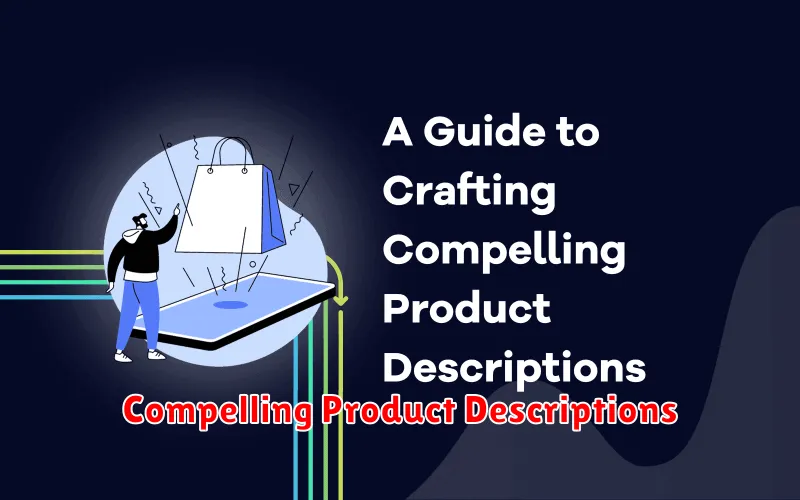Are you struggling to write ecommerce product descriptions that convert? In today’s competitive online marketplace, it’s more important than ever to have compelling product descriptions that entice customers to click “add to cart.” If you’re looking to increase your conversion rates and boost sales, look no further! This comprehensive guide will equip you with the strategies and tips you need to craft product descriptions that sell.
We’ll delve into the art of compelling copywriting, exploring the key elements that make a description truly effective. From highlighting key features and benefits to using persuasive language and crafting an irresistible call to action, we’ll cover it all. Whether you’re a seasoned online retailer or just starting out, this guide will provide you with the tools you need to create product descriptions that captivate your audience and drive sales.
The Importance of Compelling Product Descriptions
In the bustling online marketplace, where countless products compete for attention, your product descriptions are your voice, your chance to stand out and win customers over. A compelling product description isn’t just about listing features; it’s about painting a picture, telling a story, and ultimately, convincing the reader to click “add to cart.”
Imagine browsing an online store. You see a beautiful dress but the description is just a dry list of fabrics and sizes. You’re likely to move on. Now, imagine reading a description that tells you about the dress’s intricate embroidery, its flowy silhouette, and how it makes you feel confident and beautiful. You’re more likely to be captivated and feel a connection to the product.
Here’s why compelling product descriptions are crucial:
- Increased conversions: Engaging descriptions lead to higher conversion rates. Customers are more likely to buy if they feel they understand and connect with the product.
- Enhanced brand image: Well-written descriptions reflect your brand’s voice and personality, creating a stronger connection with customers.
- Improved SEO: Keyword-rich descriptions improve your product’s visibility in search results, leading to more organic traffic.
- Reduced customer service inquiries: Clear and informative descriptions minimize questions from customers, saving you time and resources.
Investing in compelling product descriptions is investing in your online success. They are your silent sales representatives, working tirelessly to turn browsers into buyers.
Understanding Your Target Audience
Before you even start writing, you need to know who you’re writing for. Understanding your target audience is the foundation of compelling copywriting. Ask yourself:
- Who are they? What are their demographics, interests, and pain points?
- What are their needs and desires? What are they looking for in a product like yours?
- Where do they hang out online? What social media platforms do they use? What websites do they visit?
- What language do they use? How do they talk about products like yours?
Once you understand your target audience, you can tailor your product descriptions to their specific needs and interests. This will make your copy more persuasive and effective.
Highlighting Key Features and Benefits
Once you’ve crafted a captivating product description, it’s time to highlight the key features and benefits of your product. This is where you truly connect with your audience and showcase what makes your product unique and valuable.
Think about the problems your product solves for your customers. What are the features that address those problems? How do those features benefit the customer? For example, if you’re selling a pair of noise-canceling headphones, your features might include active noise cancellation technology, comfortable ear cups, and a long battery life. The benefits of these features are a peaceful listening experience, hours of uninterrupted use, and a comfortable fit for extended wear.
When listing features and benefits, strive for clarity and concision. Use bullet points or numbered lists to make the information easy to read. Prioritize benefits over features, as these are what resonate most with customers.
Here are a few tips for effectively highlighting features and benefits:
- Use action verbs to describe features and benefits.
- Quantify benefits whenever possible. For example, instead of saying “long battery life,” say “up to 20 hours of battery life.”
- Use customer testimonials to showcase the real-world benefits of your product.
- Highlight unique selling propositions (USPs) that differentiate your product from the competition.
By effectively showcasing the features and benefits of your product, you can create compelling product descriptions that entice customers to purchase.
Using Persuasive Language and Tone
In the cutthroat world of ecommerce, your product descriptions are your sales pitch. They’re your chance to convince potential customers to click “add to cart” and become loyal fans. But crafting compelling copy isn’t just about listing features; it’s about using the right language and tone to connect with your audience and drive conversions.
Focus on benefits, not just features. Instead of simply stating “this shirt is made of cotton,” highlight how that benefit translates to the customer’s experience: “Made from soft, breathable cotton, this shirt will keep you cool and comfortable all day long.”
Use action verbs and sensory language. Words like “imagine,” “experience,” and “feel” create a vivid picture in the reader’s mind. Describe the texture of a fabric, the aroma of a candle, or the feeling of wearing a new pair of shoes.
Employ persuasive techniques. Consider using social proof, such as customer testimonials or “bestseller” badges. Highlight scarcity by mentioning limited quantities or exclusive offers.
Match your tone to your brand. If you’re selling luxury goods, a sophisticated and elegant tone is appropriate. For a casual clothing brand, a conversational and relatable tone might be more effective.
Remember, persuasive language is about creating a connection with your audience. Use it to paint a picture of how your product can solve their problems, enhance their lives, and make them feel good. With the right words, your product descriptions can become powerful marketing tools that drive sales and build brand loyalty.
Writing Clear and Concise Copy
When it comes to ecommerce product descriptions, brevity is key. Your customers are scanning, not reading, so you need to get your message across quickly and effectively. Avoid long, rambling descriptions that lose the reader’s attention. Instead, focus on the most important details, using clear and concise language.
One way to achieve conciseness is to use strong verbs and active voice. For example, instead of writing “This product is designed to improve your sleep,” try “Improve your sleep with this product.” This makes the copy more direct and engaging.
Another helpful tip is to use bullet points or numbered lists to break up long blocks of text. This makes the information easier to digest and helps to highlight the key features and benefits of your product.
Ultimately, the goal is to write copy that is easy to understand and persuasive. By focusing on clarity and conciseness, you can create product descriptions that sell.
Optimizing for Search Engines (SEO)
While compelling copywriting is key to converting customers, your product descriptions also need to be optimized for search engines. This ensures your products are visible to potential buyers searching for them online.
Here are some SEO best practices for writing product descriptions:
- Keyword Research: Identify the most relevant keywords potential customers would use to find your products. Use tools like Google Keyword Planner to understand search volume and competition.
- Include Keywords Naturally: Don’t stuff your descriptions with keywords; instead, integrate them naturally within the text. Focus on creating clear and engaging copy that also includes the relevant search terms.
- Optimize Titles and Meta Descriptions: The product title and meta description are what show up in search results. Craft compelling, keyword-rich titles and meta descriptions to attract clicks.
- Use Long-Tail Keywords: Long-tail keywords are more specific phrases, often including multiple words. These can be more effective for targeting niche audiences and driving qualified traffic to your product pages.
- Optimize Images: Use descriptive file names and alt text for your product images. This helps search engines understand the content of the images, further improving your SEO ranking.
By implementing these SEO strategies, you can ensure that your product descriptions are both compelling and discoverable by your target audience.
Incorporating Visuals for Greater Impact
In the realm of e-commerce, where potential customers can’t physically touch or examine products, visuals become crucial for driving engagement and conversions. High-quality images and videos can elevate your product descriptions, offering a compelling and immersive experience that bridges the gap between online and offline shopping.
Product Photography is essential. Showcase your products in their best light, using professional photography techniques that highlight their features and benefits. Consider using lifestyle shots that depict your product being used in real-life scenarios, adding context and relatability. Don’t forget to include detailed shots of the product from multiple angles, allowing customers to examine its every detail.
Video Content can further enhance engagement. Product demos, tutorials, and even customer testimonials can be powerful tools for showcasing product functionality and building trust. Short, engaging video clips can capture attention and provide a deeper understanding of your product, ultimately increasing conversion rates.
Visual Consistency across your website is key. Maintain a cohesive brand aesthetic, using a consistent style guide for photography, color palettes, and overall visual presentation. This creates a visually appealing and professional experience for your customers, enhancing brand recognition and building trust.
By incorporating compelling visuals into your product descriptions, you can elevate your online store and make a lasting impression on potential customers. Visuals speak volumes, adding a layer of authenticity and making your products irresistible.
Showcasing Social Proof and Testimonials
Social proof and testimonials are powerful tools for building trust and credibility in your ecommerce product descriptions. When potential customers see that others have had positive experiences with your product, they are more likely to be convinced to make a purchase.
To effectively showcase social proof and testimonials, consider the following tips:
- Integrate customer reviews: Make it easy for customers to leave reviews and display them prominently on your product pages. Consider using star ratings and highlighting positive reviews.
- Feature testimonials from real customers: Use quotes from satisfied customers to showcase the benefits of your product in their own words. Include details about their experience and the results they achieved.
- Highlight social media mentions: If your product is being discussed positively on social media, share these mentions on your product pages. This can be a great way to show potential customers that others are talking about and enjoying your product.
- Leverage influencer marketing: Collaborate with influencers in your niche to promote your product and gather testimonials.
By effectively using social proof and testimonials, you can build trust and credibility with your customers, leading to increased conversions and sales.
Encouraging Customer Reviews
Customer reviews are invaluable for any ecommerce business. They build trust, increase conversions, and provide valuable insights into customer needs. To encourage more reviews, make it easy for customers to leave feedback by providing a clear and prominent call to action. Offer incentives, like discounts or exclusive access to new products, in exchange for reviews. Consider using a review platform, like Google My Business or Trustpilot, to centralize and display reviews. Respond promptly to all reviews, both positive and negative, to demonstrate your commitment to customer satisfaction.
Analyzing and Improving Conversion Rates
Once you’ve crafted compelling product descriptions, it’s crucial to analyze their effectiveness. Conversion rates, which measure the percentage of website visitors who take a desired action (like making a purchase), are the ultimate metric for success.
Here are some ways to analyze and improve your conversion rates:
- Track key metrics: Use website analytics tools to monitor metrics like add-to-cart rate, checkout completion rate, and bounce rate.
- A/B testing: Experiment with different versions of your product descriptions to see which perform best. Test variations in language, images, and layout.
- Customer feedback: Collect feedback from customers on their experience with your product descriptions. Ask what they liked or disliked, and what information was helpful.
- Competitor analysis: See how competitors are writing their product descriptions and identify areas where you can improve.
By continuously analyzing and improving your conversion rates, you can ensure your product descriptions are truly driving sales and achieving your ecommerce goals.
Examples of Effective Product Descriptions
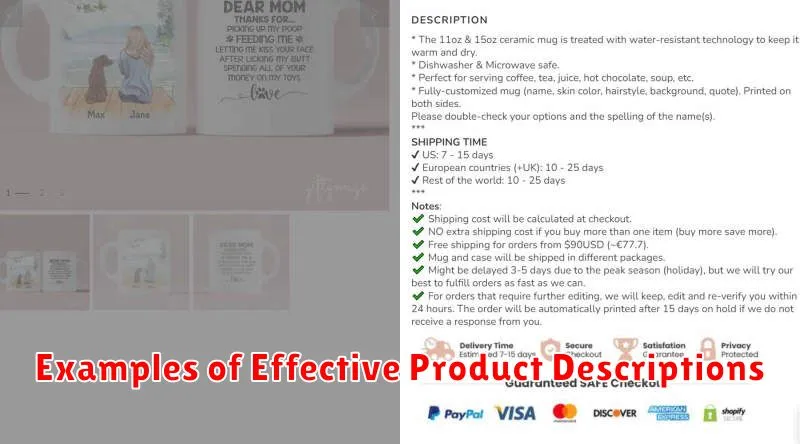
Let’s look at some examples of product descriptions that use the tips and tricks we’ve discussed:
Example 1: A Stylish and Functional Water Bottle
Product: A stainless steel water bottle with a sleek design and double-walled insulation.
Effective Description: “Stay hydrated in style with our sleek and durable stainless steel water bottle. Its double-walled insulation keeps your drinks cold for hours, perfect for hot days or long workouts. The leak-proof lid ensures no spills, and the wide mouth makes it easy to fill with ice. This bottle is not just functional but also a statement piece, with its modern design complementing any lifestyle.”
Example 2: A Luxury Skincare Product
Product: A premium face cream formulated with natural ingredients.
Effective Description: “Experience the ultimate in skincare luxury with our nourishing face cream. Infused with a blend of organic botanicals, this cream deeply hydrates and revitalizes your skin, leaving it feeling supple and radiant. Its rich texture melts into your skin, delivering a burst of antioxidants and essential vitamins. Indulge in the ultimate self-care ritual and unlock your skin’s natural beauty.”
Example 3: A Tech Gadget
Product: A portable Bluetooth speaker with advanced sound technology.
Effective Description: “Immerse yourself in crystal-clear sound with our revolutionary Bluetooth speaker. Its compact design and powerful audio drivers deliver an exceptional listening experience, whether you’re enjoying music at home, on the go, or at a party. The long-lasting battery lets you keep the music going all day, and the water-resistant design ensures durability and peace of mind. Get ready to elevate your audio experience to a whole new level.”
Tools for Writing Better Product Descriptions
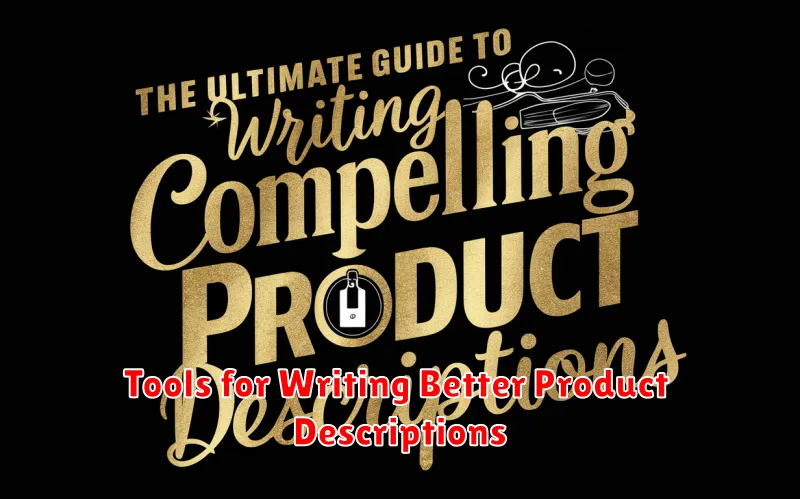
Writing compelling product descriptions requires more than just listing features. You need to use language that resonates with your target audience and makes them want to buy. To help you write descriptions that sell, here are some powerful tools:
1. Grammarly
Grammarly is a fantastic tool for improving your writing style and catching any grammatical errors. It goes beyond basic spellcheck, offering suggestions for sentence structure, clarity, and even plagiarism detection. This ensures your descriptions are polished and professional.
2. Hemingway Editor
The Hemingway Editor helps you write concise and impactful product descriptions. It highlights overly complex sentences, adverbs, and passive voice, encouraging you to streamline your writing. A clear and easy-to-read description will be much more engaging for your customers.
3. Thesaurus.com
Don’t be afraid to get creative with your language! Thesaurus.com is an excellent resource for finding synonyms and alternative phrasing. Use it to avoid repetition and inject a bit of personality into your descriptions.
4. Google Keyword Planner
Optimize your product descriptions for search engines. Use Google Keyword Planner to identify relevant keywords that your target audience is searching for. Incorporating these keywords naturally will improve your product’s visibility and drive more traffic.
5. Customer Reviews
Don’t underestimate the power of customer feedback! Read through customer reviews to gain insights into what people love and dislike about your products. This information can be invaluable for crafting descriptions that address customer concerns and highlight key benefits.
A/B Testing: Finding What Resonates with Your Customers
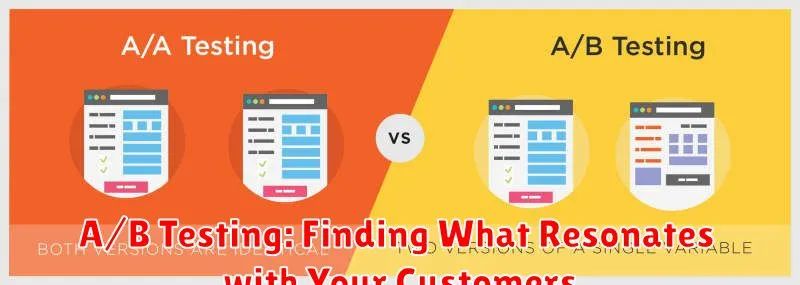
Once you’ve crafted a few compelling product descriptions, it’s time to put them to the test. This is where A/B testing comes in. A/B testing involves creating two versions of your product description (A and B), each with a slight variation, and showing them to different segments of your audience. This allows you to track which version performs better in terms of clicks, conversions, and other key metrics.
For example, you could test different headlines, bullet points, or calls to action. You can even test different image sizes or product angles. By analyzing the results, you can identify the elements that resonate most with your customers and optimize your descriptions for maximum impact.
A/B testing is a powerful tool for refining your product descriptions and ensuring they are truly effective. It helps you gather real-time feedback from your audience and continuously improve your copywriting.
The Future of Product Descriptions: AI and Personalization
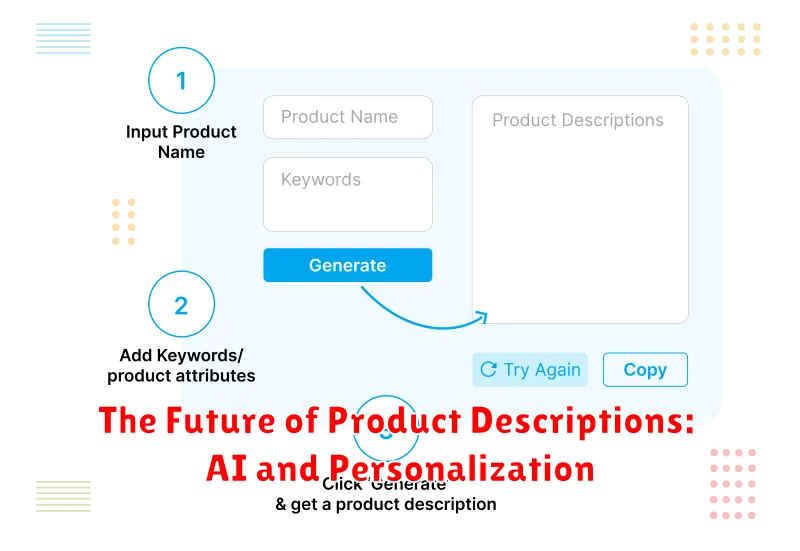
The future of product descriptions is intertwined with the rise of artificial intelligence (AI) and personalization. AI is transforming how brands create and deliver content, with tools capable of analyzing vast datasets to understand customer preferences, generate compelling copy, and even personalize product descriptions in real-time.
Imagine a future where your product descriptions dynamically adapt to each individual customer. By leveraging AI, brands can analyze browsing history, purchase data, and even social media activity to tailor descriptions that resonate with specific audiences. This level of personalization offers a more relevant and engaging experience, boosting conversions and customer satisfaction.
AI-powered tools can also automate the writing process, freeing up valuable time for marketers. These tools can analyze product data and generate high-quality descriptions, ensuring consistency and accuracy across your catalog. Furthermore, AI can assist in identifying keywords and optimizing content for search engines, maximizing visibility and attracting a wider audience.
While AI offers immense potential, it’s crucial to remember that human creativity remains paramount. The future of product descriptions lies in a harmonious blend of AI and human expertise. AI can augment the writing process, but it’s the human touch that will inject personality, emotional connection, and compelling storytelling into your product descriptions.

